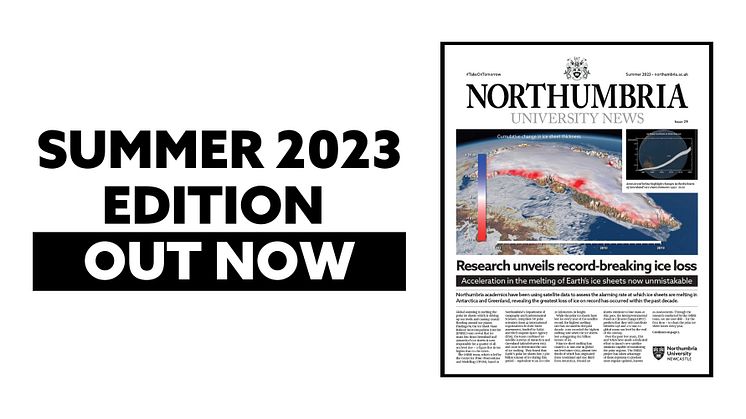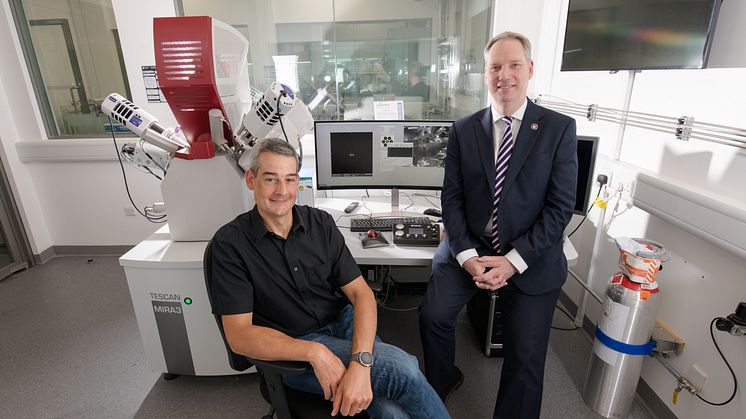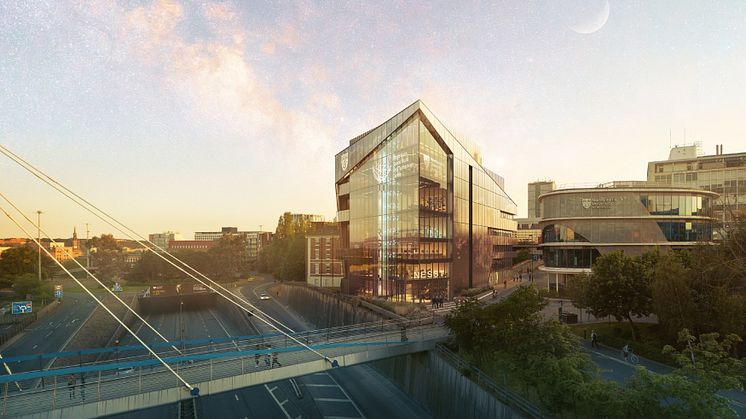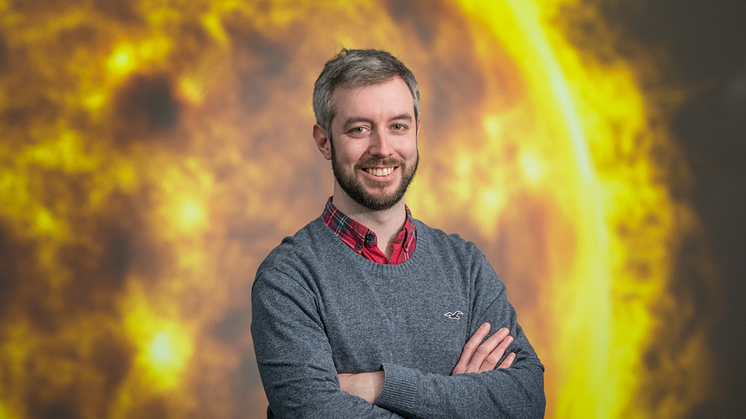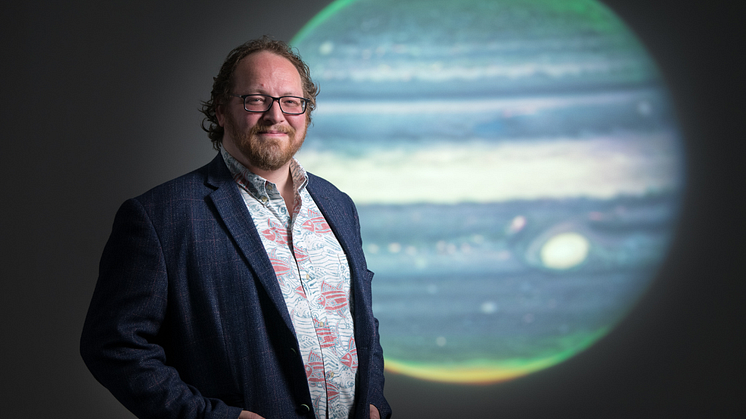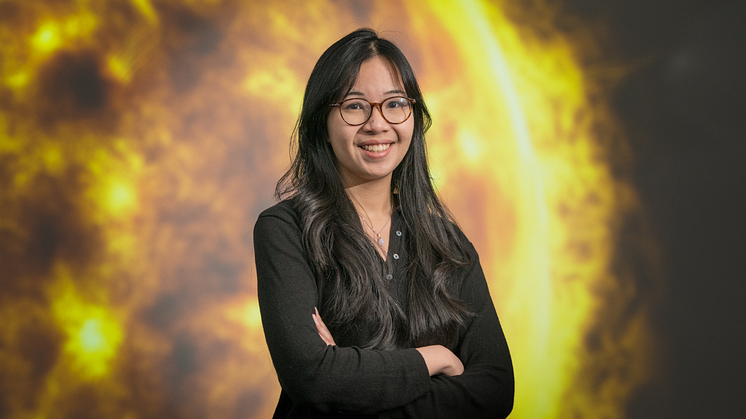
Press release -
Northumbria University and Lockheed Martin detect nanojets with machine learning algorithms
A mystery which has baffled astronomers and physicists for decades is a step closer to being solved thanks to a collaboration between Northumbria University and leading US aerospace technology organisation, Lockheed Martin.
The Solar Corona is the outermost part of the Sun’s atmosphere, and yet it reaches temperatures millions of degrees hotter than the surface of the Sun. It is shaped and powered by the Sun’s magnetic field, but the exact process through which the magnetic field transfers its energy to the coronal gas has remained elusive over the last 80 years.
One theory, known as the Parker nanoflare theory, which originated in 1988, suggests the heat generated when magnetic field lines within the corona break and reconnect results in a sudden burst of energy or ‘nanoflare’.
In 2021, a team of researchers, led by Northumbria’s Dr Patrick Antolin found direct evidence that this reconnection produces a very rapid, sideways separation of reconnecting magnetic field lines along with a nanoflare, creating ‘nanojets’. This phenomenon now constitutes the tell-tale sign of the nanoflare theory and could account for the solar corona’s high temperature if prevalent in the corona.
However, nanojets are difficult to detect and predict. Any images and footage capturing the process in action has been purely by chance, with little known about how often nanojets occur and how they impact coronal heating. The small sizes and short timescales of nanojets also make it difficult for instruments to detect them with the current available resolutions.
In a bid to gather more evidence, Northumbria PhD student Ramada Sukarmadji, under the supervision of Dr Patrick Antolin, is working with scientists from the Lockheed Martin Solar and Astrophysics Laboratory (LMSAL), which is part of Lockheed Martin’s Advanced Technology Center, to develop machine learning algorithms which will automatically detect and record nanojets when they occur.
Ramada is a member of Northumbria University’s world-leading Solar and Space Physics research group, which collaborates extensively with UK Research and Innovation, the UK Space Agency, the European Space Agency, the UK Met Office, and over 40 industrial partners – including Lockheed Martin.
Dr Patrick Antolin is a leading expert in magnetic reconnection and nanojets. His paper Reconnection nanojets in the solar corona, published in Nature Astronomy in 2020, reported on the first discovery of nanojets in action resulting in coronal heating.
The Northumbria University and Lockheed Martin team will analyse existing footage of nanojets captured by NASA’s Interface Region Imaging Spectrograph (IRIS) and the Solar Dynamics Observatory (SDO) Atmospheric Imaging Assembly, both of which Lockheed Martin Solar and Astrophysics Laboratory (LMSAL) designed, built, and operates. The IRIS team has devoted many weeks of observations to detecting nanojets. Using this data, the team will identify the spectral and intensity profiles unique to the nanojet when it occurs and use machine learning to create algorithms for further analysis.
Ramada recently spent five weeks working alongside LMSAL scientists in Palo Alto, California. Funding for the trip was secured by Dr Antolin from the European Space Agency, as well as through the Turing Scheme, a UK government programme which provides opportunities for students to work or study abroad. Dr Alberto Sainz Dalda from LMSAL recently spent time at Northumbria as part of an Inter-Disciplinary Research Theme project to continue the collaborative work with Ramada and Dr Antolin.
Speaking about the research project, Ramada said, “Thanks to the work of my supervisor Dr Antolin and others, we know nanojets exist and that reconnection-based heating may play a significant part in explaining why the solar corona reaches such high temperatures.
"However, at the moment we can only identify nanojet occurrences by eye – what we need is a way of detecting them automatically, especially given the large amount of data that has been obtained for our project.
“They are very small and the limited evidence we have suggests there are probably more than we think, but to really understand them further we need to be able to detect them as they occur.
“By analysing data from previous occurrences of nanojets we can essentially ‘teach’ a computer to identify nanojets through machine learning. This will allow us to capture future events and really develop our understanding of this phenomena and how it contributes to the heating of the Corona.”
Speaking about Ramada’s research, Dr Antolin said, “Working with Ramada on nanojets has been pure joy. Her will to learn, impressive skillset and great eloquence make her an excellent researcher. She has done amazing work through these years that have not only helped establish nanojets as a significant cornerstone in solar physics but also elevated their importance by making further impactful discoveries.”
Northumbria University has a strong partnership with Lockheed Martin, with a new collaboration announced last year which will see an investment of more than £600,000 to support the development of skills, research and technology across the region.
This was followed up with a further £150,000 investment specifically to Northumbria University, announced in March, in a project that aims to accelerate the delivery of space-based solar power.
Prospective students can find out more about this exciting research area on Northumbria University’s Physics with Astrophysics BSc (Hons) degree course, which includes learning about space weather, artificial intelligence and the latest astrophysics research.
Solar and Space Physics is an academic peak of excellence at Northumbria University. Find out more about the work of academics carrying out research in this field.
Topics
Categories
UNIVERSITY OF THE YEAR 2022 (Times Higher Education Awards)
Northumbria is a research-intensive university that unlocks potential for all, changing lives regionally, nationally and internationally. Find out more about us at www.northumbria.ac.uk
--- Please contact media.communications@northumbria.ac.uk with any media enquiries or interview requests ---









